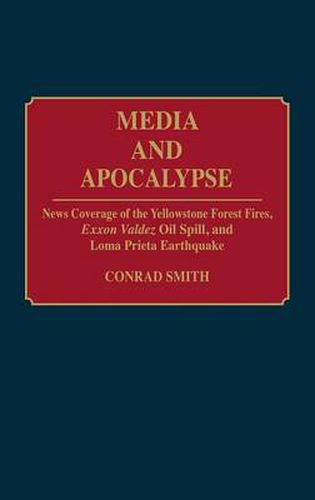Readings Newsletter
Become a Readings Member to make your shopping experience even easier.
Sign in or sign up for free!
You’re not far away from qualifying for FREE standard shipping within Australia
You’ve qualified for FREE standard shipping within Australia
The cart is loading…






This text is a critical examination of how newspaper and television journalists reported three catastrophes: the 1988 forest fires in and near Yellowstone National Park; America’s largest oil spill on March 24, 1989 in Alaska’s Prince William Sound; and California’s most expensive earthquake, south of San Fransisco on October 17, 1989. The focus is on the processes by which journalists identified news sources and gathered data, on the professional values of the journalists and on the ways in which those values contributed to or interfered with good reporting. The book is based on examination of several thousand newspaper and television stories, on news accounts by independent experts, on personal visits to the sites of the catastrophes, and on interviews with more than 100 reporters, correspondents, producers, editors, and their sources. Conrad Smith’s scholarly goal is to provide a theoretical understanding of the process by which reporters gather information for these kinds of stories and thus to identify changes in the journalistic routine that might encourage more accurate and comprehensive coverage of public issues. He shows how television reports sometimes influence the ways print reporters structure their stories, an effect he calls journalistic priming . He examines the ways in which Pulitzer Prize-winning stories are different from others, and attempts to integrate reporters’ and sources’ comments with the theoretical literature. This is the first book-length effort that uses a single research design to compare how both print and television journalists covered several major events, and to examine the interrelationship between the television and newspaper reporting. Other scholars often ignore one or the other, as though the two media operated independently.
$9.00 standard shipping within Australia
FREE standard shipping within Australia for orders over $100.00
Express & International shipping calculated at checkout
This text is a critical examination of how newspaper and television journalists reported three catastrophes: the 1988 forest fires in and near Yellowstone National Park; America’s largest oil spill on March 24, 1989 in Alaska’s Prince William Sound; and California’s most expensive earthquake, south of San Fransisco on October 17, 1989. The focus is on the processes by which journalists identified news sources and gathered data, on the professional values of the journalists and on the ways in which those values contributed to or interfered with good reporting. The book is based on examination of several thousand newspaper and television stories, on news accounts by independent experts, on personal visits to the sites of the catastrophes, and on interviews with more than 100 reporters, correspondents, producers, editors, and their sources. Conrad Smith’s scholarly goal is to provide a theoretical understanding of the process by which reporters gather information for these kinds of stories and thus to identify changes in the journalistic routine that might encourage more accurate and comprehensive coverage of public issues. He shows how television reports sometimes influence the ways print reporters structure their stories, an effect he calls journalistic priming . He examines the ways in which Pulitzer Prize-winning stories are different from others, and attempts to integrate reporters’ and sources’ comments with the theoretical literature. This is the first book-length effort that uses a single research design to compare how both print and television journalists covered several major events, and to examine the interrelationship between the television and newspaper reporting. Other scholars often ignore one or the other, as though the two media operated independently.